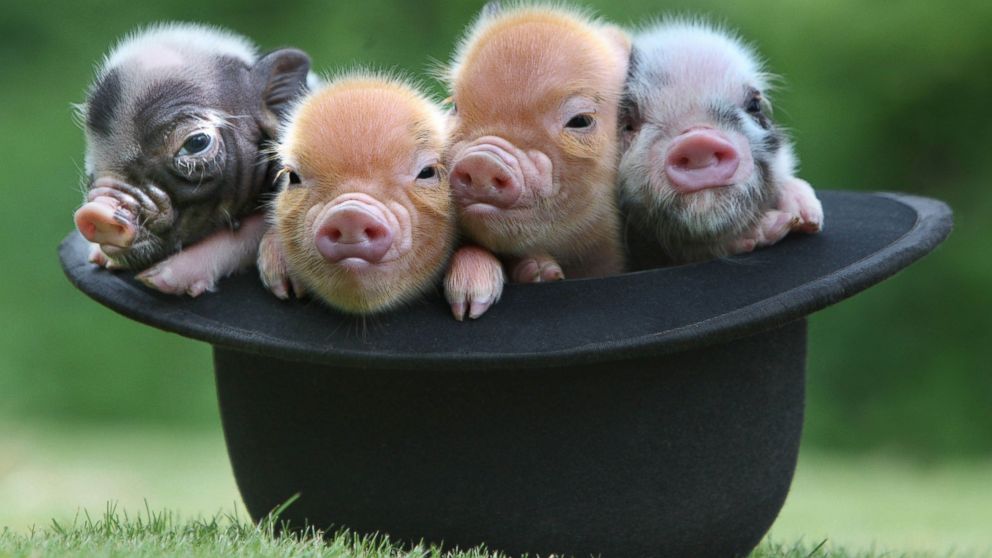A miniature pig, is a breed of pig developed and used for medical research or for use as a pet. These smaller pigs were first used for medical research in Europe before being introduced to the United States in the 1980s. Since then, the animals have been used in studies by scientists around the world, and have also risen and fallen in popularity as unusual pets.
Miniature pigs, also known as micro pigs, pocket pigs, or teacup pigs, have seen an increase in popularity in being kept as pets, especially following Paris Hilton's purchase of one in 2009. They are intelligent animals and can be house-trained. They do not shed and tend to keep themselves clean.
Micro pigs can potentially make great pets, but there are considerably more risks involved when buying a micro pig over other common pets, such as cats or dogs. The biggest concern is that, since there is no established breed of "teacup pig", there is no guarantee that the pig sold as such will actually stay small. The risk of ending up with a large pig can be somewhat minimized by looking at the pig's parents and grandparents if possible. If they are on the smaller side, the odds are better that the pig will remain small. However, since pigs can breed years before they fully mature, unscrupulous or ignorant breeders may show off parent pigs which are not fully grown themselves, so have not reached their full adult size. Some breeders may falsely claim that a mini-pig is guaranteed to stay under a certain weight, and sometimes will recommend a diet regimen that starves the animal and unnaturally stunts its growth.


 Click this link to be taken to a pig size comparison chart.
Wikipedia page about micro pigs.
A YouTube channel that has videos all about micro pigs.
Information about micro pigs.
More info on micro pigs.
Interested in buying one? Click here.
Click this link to be taken to a pig size comparison chart.
Wikipedia page about micro pigs.
A YouTube channel that has videos all about micro pigs.
Information about micro pigs.
More info on micro pigs.
Interested in buying one? Click here.